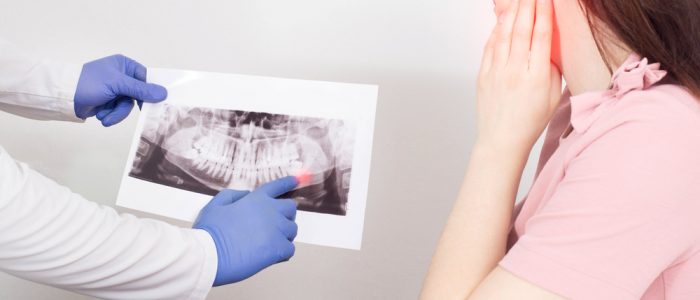When Do Wisdom Teeth Come In?

Wisdom teeth are the third set of molars that typically emerge in the late teenage years or early adulthood, sometime between ages 17 and 25.
Over 85% of American adults by age 25 have had wisdom teeth removed, according to the American Association of Oral and Maxillofacial Surgeons (AAOMS).
Northside Dental Clinic in Springfield, Missouri, answers the question: when do wisdom teeth come in and why?
Factors that Predict When Wisdom Teeth Emerge
Some people never develop wisdom teeth. Others experience delayed development. Timing varies based on several factors:
- Jaw size
- Genetics
- General oral health
Signs that Wisdom Teeth Are Coming In
- Aches and pains – a dull ache in the back of the jaw that can become pronounced.
- Redness – gums can turn dark red or pink as the wisdom teeth emerge.
- Irritation in the gums – slight irritation and discomfort can arise.
- Small white areas – the small white, burgeoning areas are your new teeth coming in.
Issues with Wisdom Teeth
When wisdom teeth erupt upright, there is no pain, and they often don’t need to be extracted. But when they erupt at an angle, discomfort occurs.
It’s because the mouth is too crowded for wisdom teeth to develop.
This is when third molars become impacted, in other words, trapped under the jaw or gum. This is because they grow in at an awkward angle, causing discomfort.
If these teeth are poorly positioned, food can get trapped, causing bacteria growth.
These are also difficult teeth to reach.
In such cases, removing wisdom teeth is the best option. This is often a normal part of other treatments like braces, gum disease, or other dental care.
Signs of Impacted Wisdom Teeth
- Pain and swelling in the back of the mouth
- Redness and inflammation of the gums
- Difficulty opening the mouth
- Bad breath or an unpleasant taste in the mouth
- Crowding or shifting of surrounding teeth
What if Impacted Wisdom Teeth Aren’t Removed
- Cysts. The wisdom tooth emerges from a sac within the jawbone. The sac can fill with fluid and form a cyst, damaging the jaw, nerves, and teeth. This may require the removal of tissue and bone.
- Decay. Bacteria and food get trapped between the gum and tooth, causing cavities and erosion of the tooth.
- Damage to adjacent teeth. Wisdom teeth push against other teeth, requiring realignment through orthodontic treatment.
- Gum disease. Because they are difficult to clean, bacteria can grow, causing increased gum sensitivity or a more serious condition called “periodontitis.”
When to Seek Dental Treatment
If there is pain or swelling, talk to a doctor and have them prescribe the best procedural solution.
Wisdom tooth extraction is a common, straightforward procedure that involves the use of local anesthesia or sedation.
In some cases, dentists will recommend removing wisdom teeth even when there is no pain or discomfort. It’s because these teeth are harder to clean and can easily develop cavities, leading to costly interventions spanning from fillings to root canals.
Visit Northside Dental Clinic for Regular Checkups
Northside Dental Clinic offers limited wisdom tooth removal services. However, our team can refer you to the right specialist to help get your wisdom teeth removed. For more information about our other services, from regular checkups to dental extraction, contact us today.

